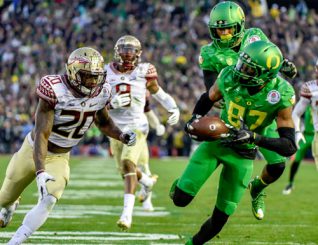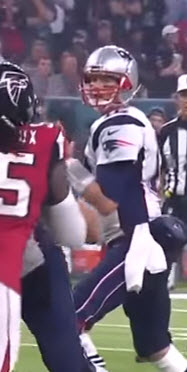(The two major players above: who was a great player, and who was a CHAMPION? Charles Fischer)
A player can be a great player but not a champion. How can that be? How can a player have record-breaking statistics, yet not be a champion? What is that magic ingredient or special trait that allows a player to wear a champion’s crown?
Derek Jeter recently got his number 2 retired at Yankee Stadium. This puts him in very select company. Love them or hate them, the New York Yankees are the most successful professional franchise on the planet, so to have your jersey retired by the Yankees is very special indeed. But what did Jeter do to earn this honor? His stats were good, but there were others who had better. But Jeter brought a champion’s DNA to the dance. He was at his best when only his best would do. He was an integral part of five World Series Championship teams, and did what had to be done to win. Here are some of the traits that made him a champion:
1. He always gave all he had all the time. He set an example of championship play, whether by running out an infield grounder or diving into the stands after a pop foul.

Darren Carrington was a great player….
2. He showed class both on and off the field. He carried himself like a champion at all times.
3. He sacrificed his individual stats for the good of the team. He could have tried to hit more homers but hitting the ball to right field was what worked for the Yanks
4. He played big in big games. The bigger the game, the bigger he played.
5. He led by his actions. He played the way he wanted his teammates to play. He added value to the NY Yankees.
How do Jeter’s traits compare to other great champions?
Bill Russell was the heart and soul of Red Auerbach’s Boston Celtics, who dominated the NBA from the mid-1950s to the mid-1960s. How dominant were they? Russell’s teams won 11 championships in 13 years! You can’t be much more dominant than that. Add to that the fact that playing against Russell during that time was Wilt Chamberlain, the reigning Goliath of the NBA. “Wilt the Stilt” was scoring and rebounding at record paces, but not against Russell. Only Russell could contain the mighty Chamberlain, even though Chamberlain was bigger, stronger, faster and younger than Russell. What was Big Russ’s secret? What did he have that made Chamberlain wilt? Here is some of Russell’s championship DNA:
1. He believed in his team, and always put winning ahead of his own personal stats. Though Russell was a great scorer in college, with the Celtics he focused on defense and rebounding.
2. He did what was required to win championships. The Celtics had other guys that could score but only Russell could defense Chamberlain.
3. He went all out all the time and wore his opponents out.
4. Russell was at his best against the best.
So while Chamberlain won scoring titles, Russell won championships.
Notice the similarities between Jeter and Russell?
Let’s look at another example, the great Tom Brady. Brady won his fifth Super Bowl leading the Patriots’ comeback from a 28-3 halftime deficit to the Atlanta Falcons, to win in overtime 34-28. For Brady to engineer a comeback like that, he had to have the entire team believe in him. How did he generate that belief?

Tom Brady was unflappable in the comeback.
Brady came to the Pats as a sixth-round draft pick, without an overly impressive college resume. He was a backup to the highly touted Drew Bledsoe when his opportunity arose. Though not starting, Brady worked out relentlessly to transform his body, and studied video relentlessly to transform his mind. So when the opportunity came, Brady was ready. He knew Bill Belichick‘s system and played within it.
A player gains his teammates’ respect by having a great work ethic. Brady gained their respect — and led them to a Super Bowl Championship — in his first year as a starting QB. His unselfish style of play and his manner of giving credit to his teammates made him their leader. The result was four additional Super Bowl championships. There have been many great NFL QBs, but only one has won five Super Bowls. Let’s have a look at Tom Brady’s DNA:
1. He is a team first guy — he puts his team’s success above his own. He could throw the ball deep more and have more touchdown passes, but Brady controls the clock using short, high-percentage passes. This keeps the Patriots’ defense off the field and the ball away from opposing offenses.
2. He has a tremendous work ethic that sets the example for the entire squad.
3. He is unflappable; he never gets rattled. As a result his team doesn’t get rattled either. Brady exudes poise, even when trailing 28-3.
4. A leader gives his followers hope. Brady gives the Patriots hope that if they can just hang in there he will come through.
5. Brady plays big on the biggest stage: he set a Super Bowl passing record while leading the historic comeback vs The Falcons.
Do you notice the common threads in these three great champions? Who among Oregon greats are examples of each?
Coach Tony DeMeo
Charleston, West Virginia
Top Photo by Kevin Cline
Related Articles:
Seven Offensive Coordinator Candidates for the Oregon Ducks
A Legendary Coach Explains Cristobal to Fans: Win with STRATEGY, Not Scoring
Analytics vs. Common Sense: For Coaches Making the BIG DECISIONS
Five Candidates to Replace OC Marcus Arroyo
Coach Jim Mastro: The Perception, and the Truth
Has Oregon Turned the Corner on Offense?
Tony DeMeo (Football Analyst) has 25 years experience as a head college football coach, racking up an overall record of 137-108-4. Coach DeMeo recently retired after a six year stretch as the head coach of the University of Charleston, following previous stints at Washburn University, Mercyhurst College, and Iona College. Tony Demeo also spent time as an assistant coach with Richmond, Murray State, Temple, UMass, Delaware, Penn, and Pace University. He has been named Coach of the Year four times, and was elected into the Iona College Hall of Fame in 1997 as a player and coach. He will also be inducted in the Mercyhurst University Hall of Fame in June of 2017 as a coach.
Coach Demeo’s “Triple Gun” offense has set numerous records at multiple schools, and he is an expert on spread offenses, having written numerous books and creating tutorial DVDs on the topic, and is a popular speaker at coaching clinics.
Visit http://tonydemeo.com/ for more information.

